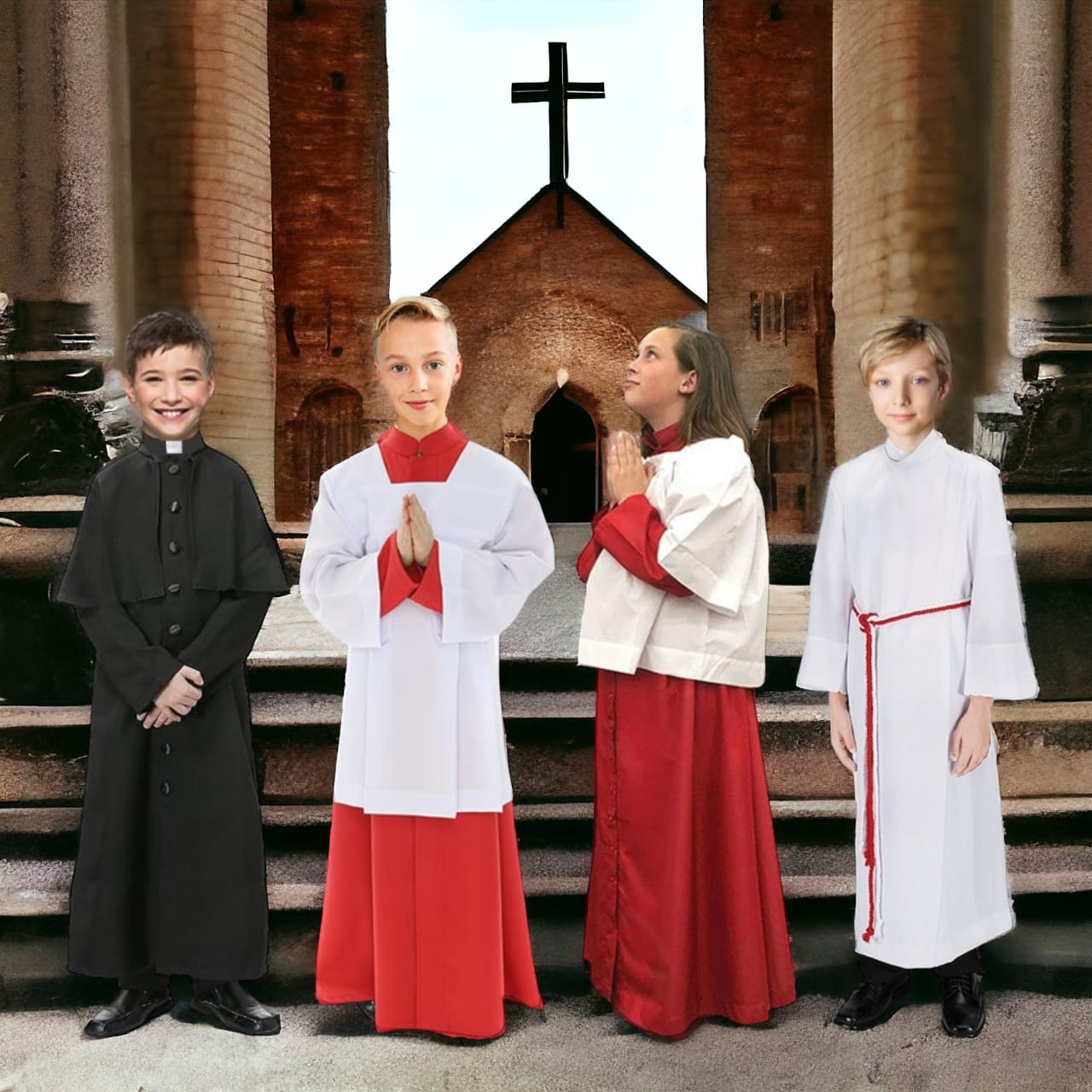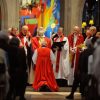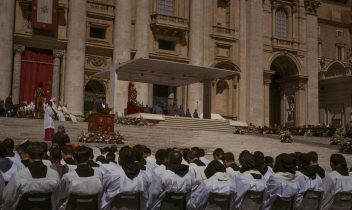No products in the cart.
Return To Shop
Why Do Altar Servers Wear Red Cassocks?
In the hallowed halls of churches around the world, one can often spot a group of individuals dressed in vibrant red cassocks, diligently assisting the clergy during religious ceremonies (Altar Servers Red Cassocks). These individuals, known as altar servers, play a crucial role in the solemnity and order of the liturgy. Yet, for many observers, the question remains: why red? What significance does this color hold in the realm of religious symbolism? To unravel this mystery, let us embark on a journey through history, tradition, and spirituality.
The tradition of altar servers traces its roots back centuries, evolving alongside the development of Christian liturgy. In the early days of the Church, it was common for acolytes’ individuals appointed to assist the clergy to wear simple garments appropriate for their service. However, as the liturgy became more structured and ceremonial, so too did the attire of those who participated in it.
The adoption of the cassock, a long clergy robe typically worn by clergy, as the standard attire for altar servers occurred around the Middle Ages. Initially, cassocks worn by servers were often plain and devoid of color, reflecting a sense of humility and simplicity in their role within the church hierarchy.
However, the introduction of colored Altar Server Cassock, particularly red, brought a new layer of symbolism to the attire of altar servers. Red, throughout religious iconography, carries rich connotations that resonate deeply within the Christian tradition.
One of the most prominent associations with the color red is its representation of the Holy Spirit. In Christian theology, the Holy Spirit is often depicted in fiery imagery, symbolizing the divine presence and the transformative power of God. As altar servers assist in the celebration of the Eucharist and other sacraments, their red cassocks serve as a visual reminder of the Spirit’s guiding presence within the liturgy.
Moreover, red holds significance in the context of martyrdom and sacrifice. The martyrs, who bravely bore witness to their faith even in the face of persecution and death, are honored within the Catholic Church as exemplars of courage and devotion. The color red, reminiscent of the blood shed by these martyrs, becomes a symbol of their sacrifice and the ultimate victory of faith over adversity.
Furthermore, red is associated with the feast of Pentecost, commemorating the descent of the Holy Spirit upon the apostles. During this event, described in the Book of Acts, flames appeared over the heads of the apostles, signifying the outpouring of the Spirit. The color red thus becomes a visual representation of the transformative power of Pentecost, igniting the hearts of believers with zeal and fervor.
In addition to its spiritual symbolism, the color red also carries practical significance within the context of liturgical celebrations. In a sea of white and gold vestments worn by clergy, the red cassocks of altar servers provide a striking contrast, drawing attention to their vital role in the liturgy. This visual distinction serves as a reminder of the collaborative nature of worship, where clergy and laity come together as one body to glorify God.
Beyond its symbolic and practical implications, the tradition of altar servers wearing red cassocks also fosters a sense of identity and belonging within the faith community. For many young individuals who serve at the altar, donning the red robe becomes a tangible expression of their commitment to serving God and their desire to actively participate in the life of the Church. It is a badge of honor, signifying their role as stewards of the liturgy and ambassadors of Christ’s love.
The tradition of altar servers wearing red cassocks is steeped in deep theological significance and rich symbolism. From its representation of the Holy Spirit to its association with martyrdom and sacrifice, the color red serves as a powerful reminder of the central tenets of the Christian faith. As altar servers continue to play an integral role in the celebration of the liturgy, their vibrant attire serves as a beacon of hope and a testament to the enduring beauty of sacred tradition. Why Do Altar Servers Wear Red Cassocks?









Add comment
You must be logged in to post a comment.